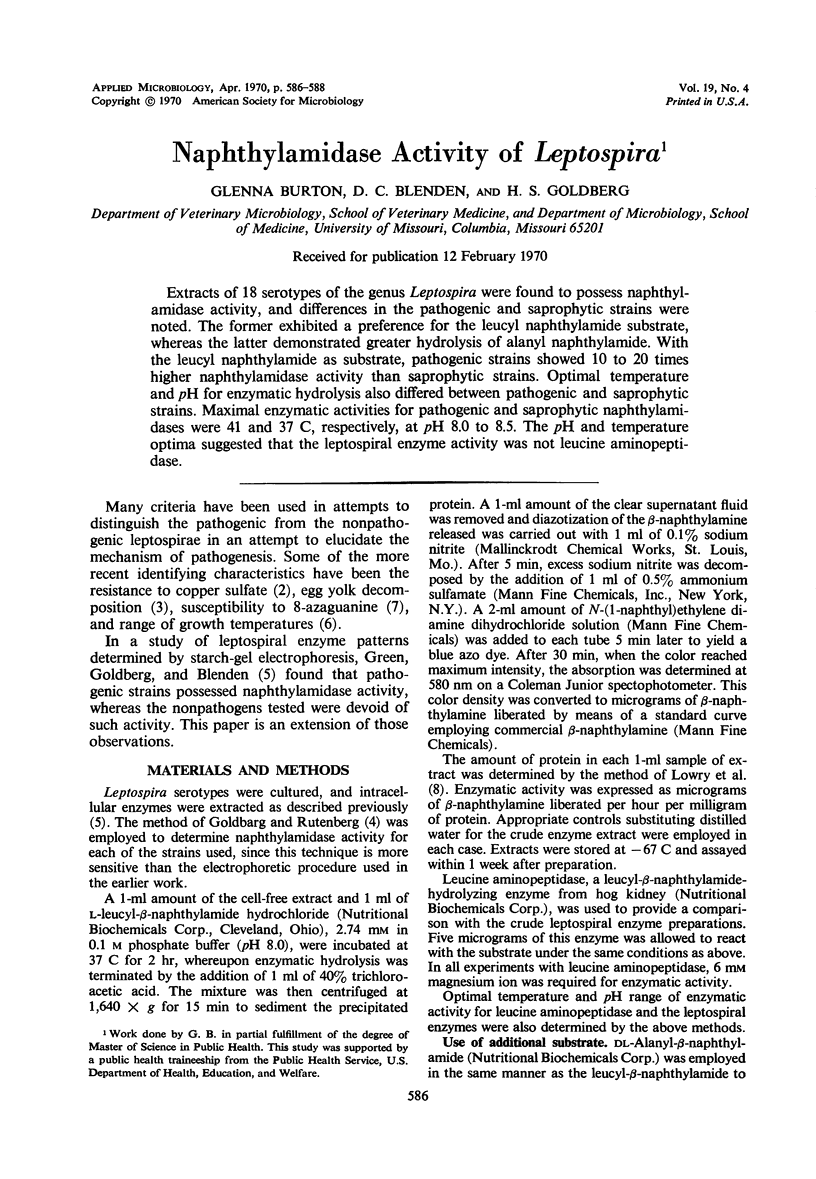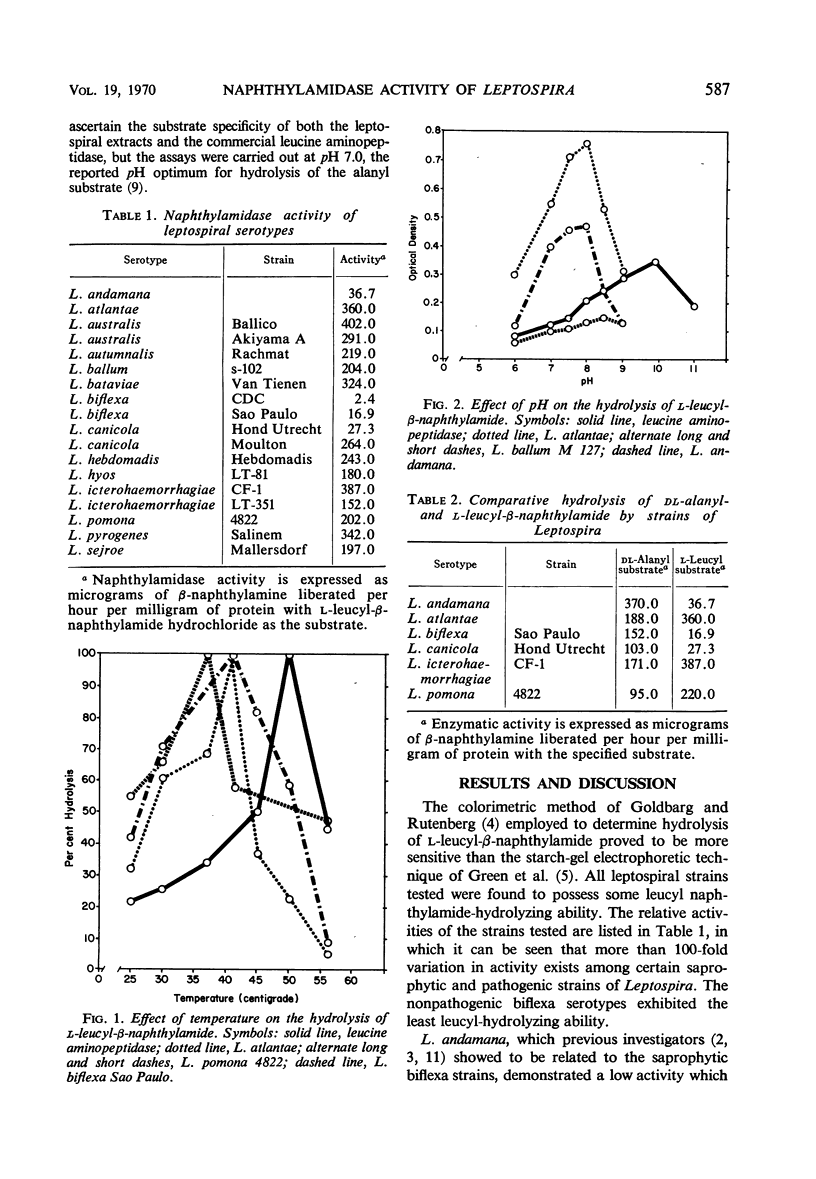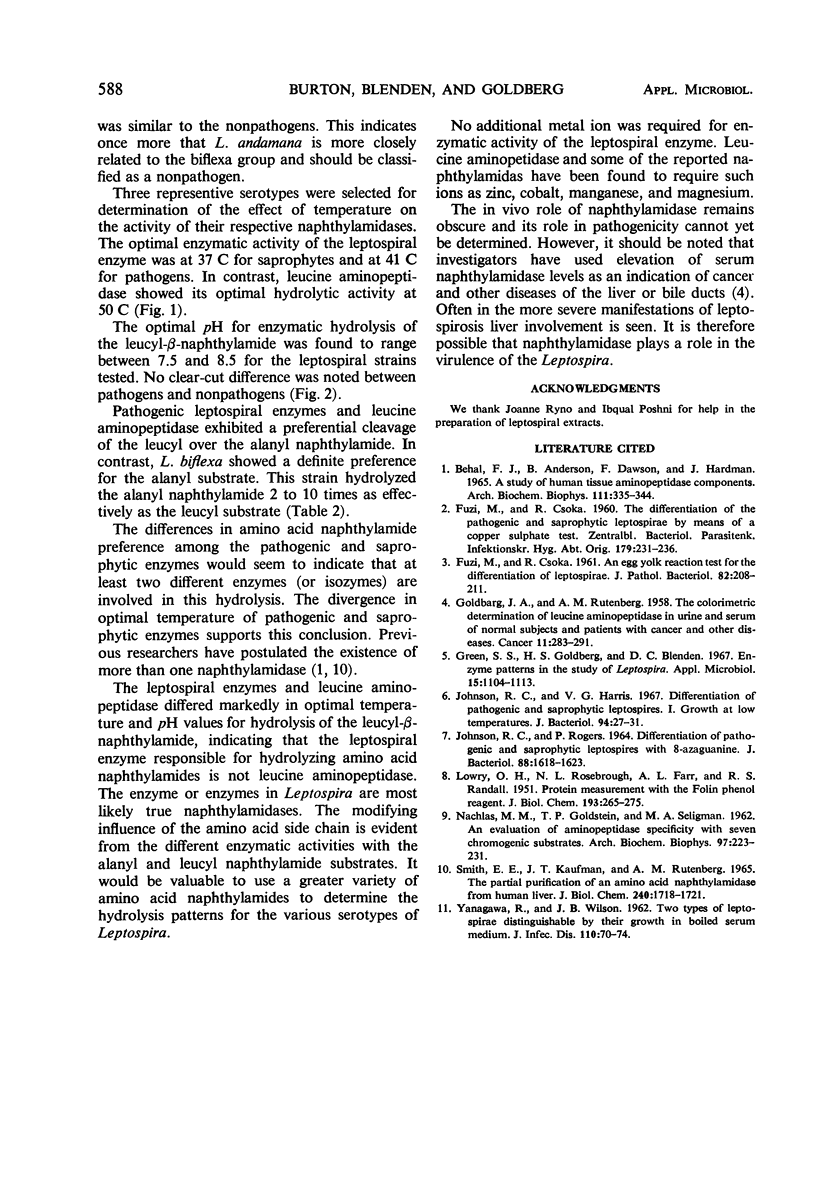Abstract
Extracts of 18 serotypes of the genus Leptospira were found to possess naphthylamidase activity, and differences in the pathogenic and saprophytic strains were noted. The former exhibited a preference for the leucyl naphthylamide substrate, whereas the latter demonstrated greater hydrolysis of alanyl naphthylamide. With the leucyl naphthylamide as substrate, pathogenic strains showed 10 to 20 times higher naphthylamidase activity than saprophytic strains. Optimal temperature and pH for enzymatic hydrolysis also differed between pathogenic and saprophytic strains. Maximal enzymatic activities for pathogenic and saprophytic naphthylamidases were 41 and 37 C, respectively, at pH 8.0 to 8.5. The pH and temperature optima suggested that the leptospiral enzyme activity was not leucine aminopeptidase.
Full text
PDF


Selected References
These references are in PubMed. This may not be the complete list of references from this article.
- Behal F. J., Asserson B., Dawson F., Hardman J. A study of human tissue aminopeptidase components. Arch Biochem Biophys. 1965 Aug;111(2):335–344. doi: 10.1016/0003-9861(65)90194-3. [DOI] [PubMed] [Google Scholar]
- FUZI M., CSOKA R. An egg-yolk reaction test for the differentiation of Leptospirae. J Pathol Bacteriol. 1961 Jul;82:208–212. doi: 10.1002/path.1700820129. [DOI] [PubMed] [Google Scholar]
- FUZI M., CSOKA R. [Differentiation of pathogenic and saprophytic Leptospira with a copper sulfate test]. Zentralbl Bakteriol. 1960 Jun;179:231–237. [PubMed] [Google Scholar]
- GOLDBARG J. A., RUTENBURG A. M. The colorimetric determination of leucine aminopeptidase in urine and serum of normal subjects and patients with cancer and other diseases. Cancer. 1958 Mar-Apr;11(2):283–291. doi: 10.1002/1097-0142(195803/04)11:2<283::aid-cncr2820110209>3.0.co;2-8. [DOI] [PubMed] [Google Scholar]
- Green S. S., Goldberg H. S., Blenden D. C. Enzyme patterns in the study of leptospira. Appl Microbiol. 1967 Sep;15(5):1104–1113. doi: 10.1128/am.15.5.1104-1113.1967. [DOI] [PMC free article] [PubMed] [Google Scholar]
- JOHNSON R. C., ROGERS P. DIFFERENTIATION OF PATHOGENIC AND SAPROPHYTIC LEPTOSPIRES WITH 8-AZAGUANINE. J Bacteriol. 1964 Dec;88:1618–1623. doi: 10.1128/jb.88.6.1618-1623.1964. [DOI] [PMC free article] [PubMed] [Google Scholar]
- Johnson R. C., Harris V. G. Differentiation of pathogenic and saprophytic letospires. I. Growth at low temperatures. J Bacteriol. 1967 Jul;94(1):27–31. doi: 10.1128/jb.94.1.27-31.1967. [DOI] [PMC free article] [PubMed] [Google Scholar]
- LOWRY O. H., ROSEBROUGH N. J., FARR A. L., RANDALL R. J. Protein measurement with the Folin phenol reagent. J Biol Chem. 1951 Nov;193(1):265–275. [PubMed] [Google Scholar]
- NACHLAS M. M., GOLDSTEIN T. P., SELIGMAN A. M. An evaluation of aminopeptidase specificity with seven chromogenic substrates. Arch Biochem Biophys. 1962 May;97:223–231. doi: 10.1016/0003-9861(62)90073-5. [DOI] [PubMed] [Google Scholar]
- SMITH E. E., KAUFMAN J. T., RUTENBURG A. M. THE PARTIAL PURIFICATION OF AN AMINO AICD NAPHTHYLAMIDASE FROM HUMAN LIVER. J Biol Chem. 1965 Apr;240:1718–1721. [PubMed] [Google Scholar]
- YANAGAWA R., WILSON J. B. Two types of Leptospirae distinguishable by their growth in boiled serum medium. J Infect Dis. 1962 Jan-Feb;110:70–74. doi: 10.1093/infdis/110.1.70. [DOI] [PubMed] [Google Scholar]


